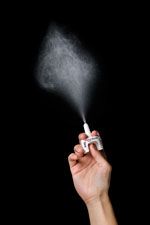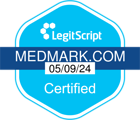
It’s always gratifying when a chain of stores sticks its neck out to offer a genuine community service to its customers. This time it’s Walgreens, the happy and healthy neighborhood pharmacy stores. Its managers are supporting naloxone programs for drug addiction rehabilitation in California, Georgia, Alabama, Texas, Maryland, and 34 other states, plus the District of Columbia. Walgreens will join the battle against the national opiate epidemic by providing kiosks so that people can drop off their unused prescription drugs, and those interested can pick up naloxone kits for use as needed.
That phrase, for use as needed, sends a little chill up the spines of many. It reminds us that the people who attend programs for drug addiction rehabilitation are our brothers and sisters, our children and our parents. The naloxone represents a very real chance to save them when they would otherwise die. It reverses a life-threatening potential overdose into a deep sigh of relief that the person we love will live to fight this battle yet another day.
Those who are new to drug addiction rehabilitation might not remember the days when naloxone was absolutely unavailable to the general public. If someone overdosed and was transported to the emergency department on time, they could receive the medication, and they might live. And if they did live, then they were arrested. The price of getting them life-saving naloxone was arrest and prosecution.
However, a person going to jail would at least still be alive, and after jail they could participate in drug addiction rehabilitation. Nowadays— in another landmark change in the lives of people with addiction—there are increasing numbers of drug courts that offer treatment in lieu of incarceration. It’s a giant step forward that people increasingly recognize the need for drug addiction rehabilitation. Instead of shame and incarceration, people with addictions can now access naloxone and treatment.
The History of Naloxone
Naloxone was developed by a team of physicians including Dr. Jack Fishman, who lived until 2013 and saw that the drug he helped create was legislated as a treatment option for countless people. Fishman lived in New York, and he worked with Dr. Harold Blumberg as well as Dr. Mozes Lewenstein to formulate this opiate antagonist.
How does an antagonist work? Think about someone antagonizing you. That person stops you from doing what you want to accomplish—which of course makes you angry. With naloxone, it puts a shield around the brain and stops the molecules of opiates from reaching it, which thwarts or antagonizes the molecules.
The person then goes into immediate and intense withdrawal symptoms. Typically, the person brought to an emergency department describes their reaction to the naloxone as nothing they’ve experienced before and do not want to experience again. But they are alive.
It’s difficult thinking back to the days when naloxone’s life-saving benefits were known but were simply not accessible to families. One mother whose son relapsed after drug addiction rehabilitation spoke anonymously about seeking naloxone on the black market. It was not legal for her to have it, but it was the only way she knew of to keep her son alive.
Dr. Fishman lived to see people survive because of a drug that he helped to create. Even better, by the time he passed, the first laws were being passed putting naloxone into the hands of first responders. And now, in 39 states plus D.C., people who live with addicts can keep the naloxone on hand. The mother of that young man who relapsed after drug addiction rehabilitation, no longer has to sneak around in order to obtain a medication that will save her son.
Walgreens Joins the Fight to Beat Addiction
Now Walgreens has announced a one-two punch that will make inroads into the battle against opiate addiction. Approximately 500 of its stores that are open 24 hours will offer kiosks so that people with unused prescription medication can bring in the medication and dispose of it. That takes it out of reach from anyone in the household, including visitors, who might use it and abuse it. Second, the naloxone nasal spray kits will be available at the pharmacy 24 hours a day. All you have to do is ask the pharmacist.
The pharmacist will instruct the person who asks for it in the proper way to use it. Most people don’t realize that even if you take naloxone to reverse an opiate overdose, you should still receive medical attention. If the naloxone leaves your system before the opiate does—and that could depend upon what opiate and how much you took—then you could pass out again and could still die.
How are the naloxone laws written to best help people who take opiates? In California, Georgia, Texas, Alabama, Maryland, and the other 34 locations, there are naloxone access laws that:
- Protect prescribers from criminal prosecution and civil liability if they prescribe, dispense, or distribute naloxone to a non-medical person.
- Allow prescriptions to be given to a third party and not just to the person who takes opiates.
- Allow prescriptions to be given in the form of authorized standing orders.
- Protect a lay person who gives the naloxone to a victim from being criminally prosecuted or civilly liable.
- Indicate there is no criminal liability for possession of naloxone.
- State immunity does not depend upon participation in a naloxone program.
There are some differences—in Georgia, the law does not specify that a person should act with reasonable care, but in most other states that is part of the law. In Maryland, the naloxone can only be prescribed to certificate holders; and the only prescribers are those who are part of a health department or a naloxone training program. You don’t have to participate in drug addiction rehabilitation in California, but you do have to take a naloxone training course if you have a standing order. So you should check naloxone legislation for your own state if you plan to keep naloxone on hand.
People who work at programs for drug addiction rehabilitation in California, Texas, Georgia, Alabama, Maryland, and other states recognize that sometimes their clients relapse. If you are in rehab at a neighborhood methadone or Suboxone program, chances are they have naloxone kits on hand, or the doctor can write you an order for one. At some clinics, when a client is administratively tapered because they’ve broken the rules or they cannot pay for treatment, the kits are provided as a precaution.
If you’re not in drug addiction rehabilitation but you feel you could benefit from it, then pick up the phone and call your neighborhood methadone program. Communities and organizations of all types are joining together so that heroin or pain pill addiction is no longer an automatic death sentence.


